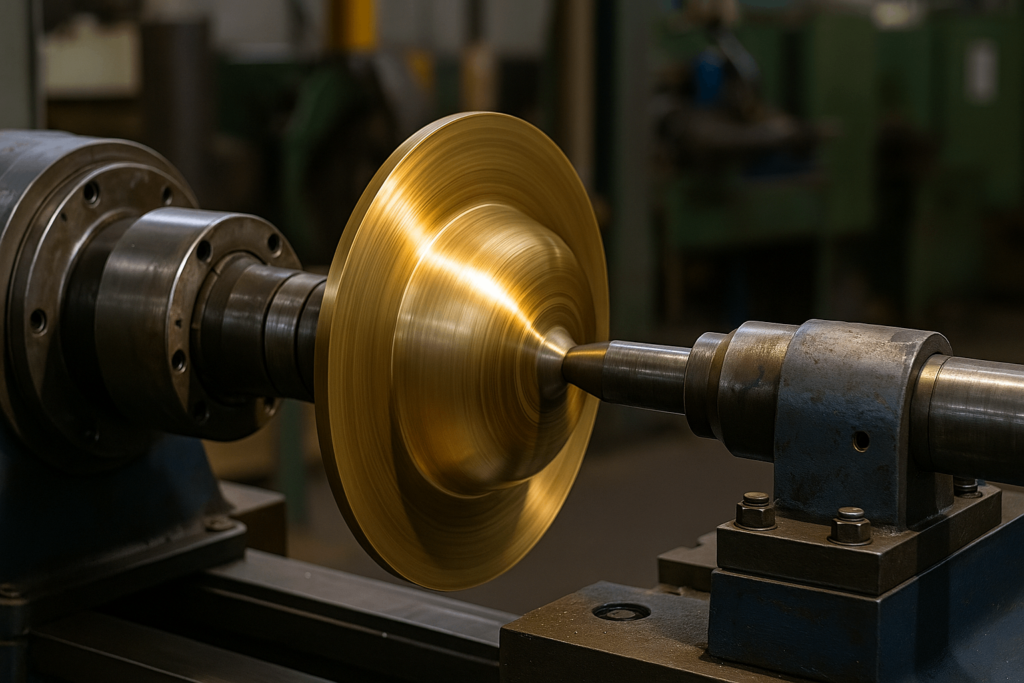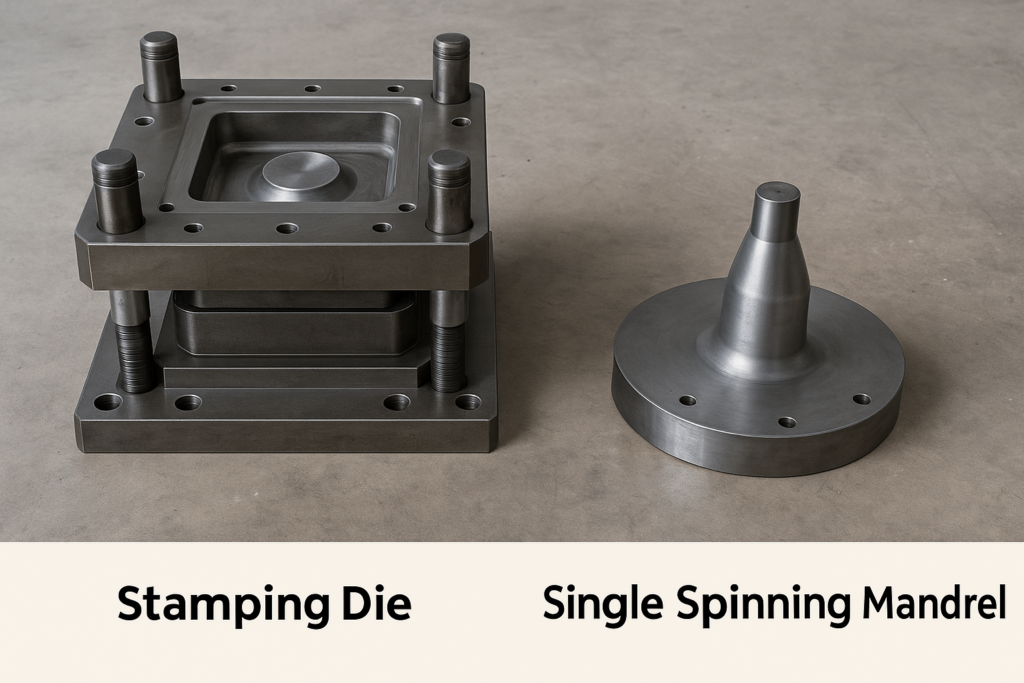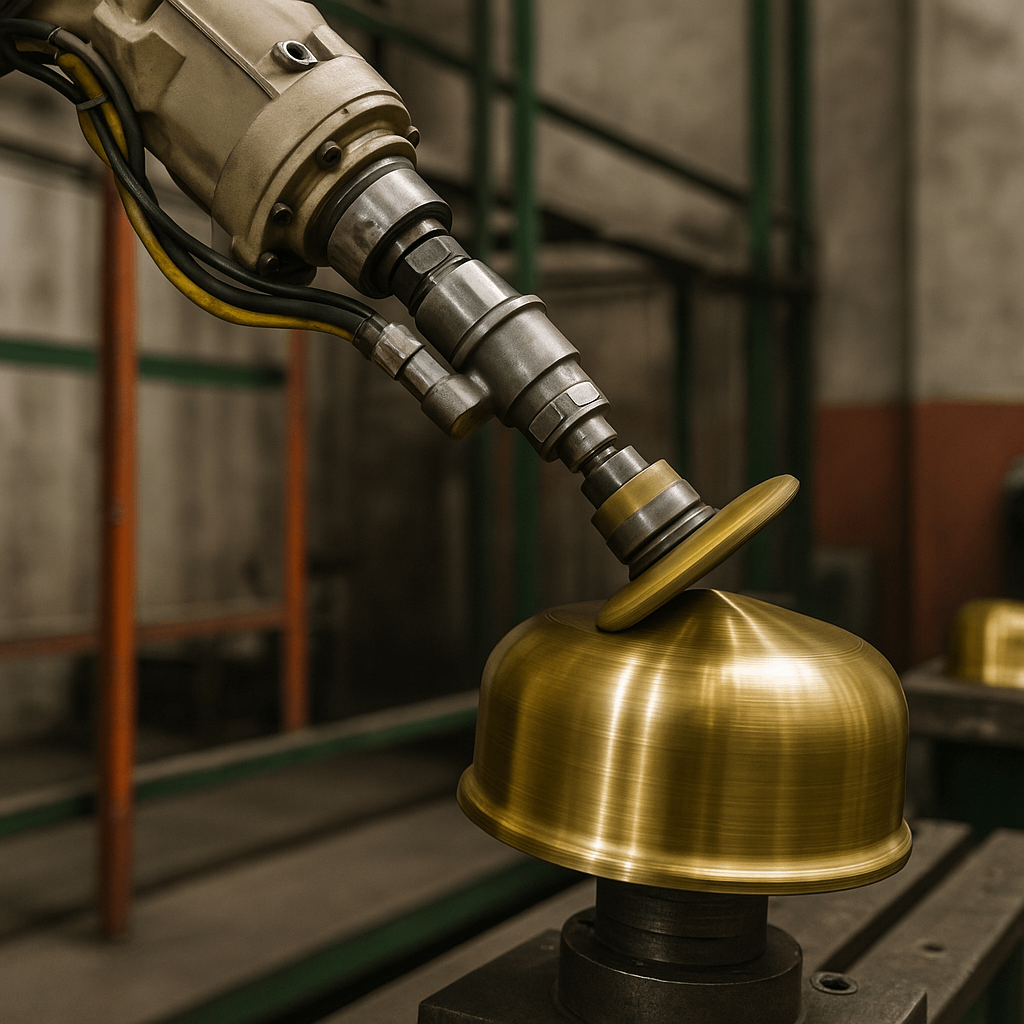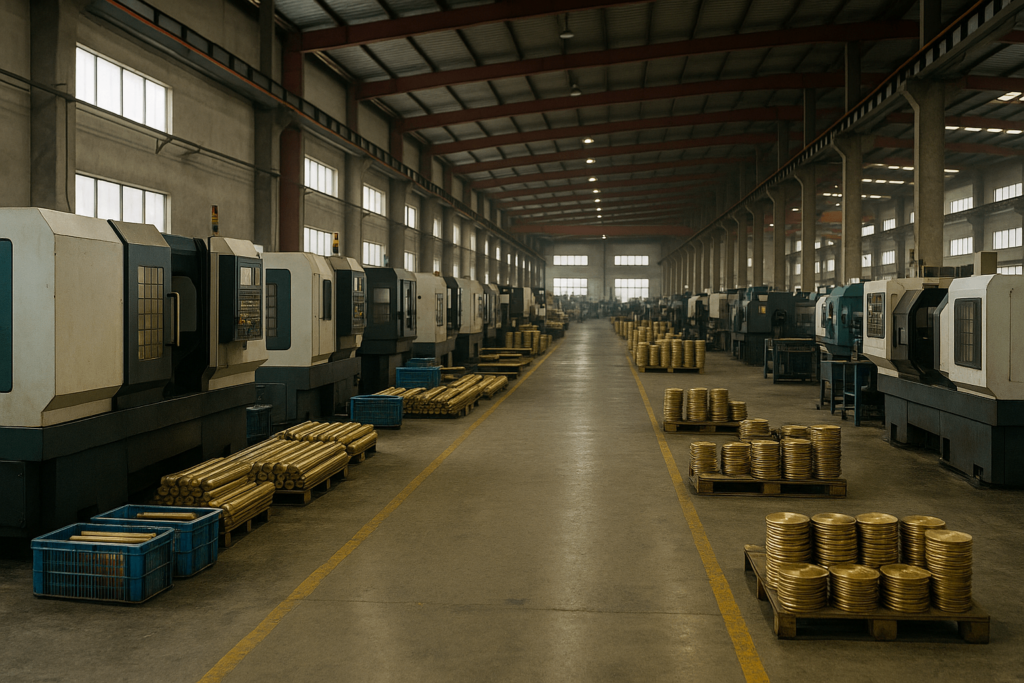In industrial sourcing, every component decision directly affects performance, cost, and supply chain continuity. Brass spinning—a specialized metal forming technique—delivers a strong return on investment for custom, seamless components across multiple industries.
This article equips B2B buyers and sourcing engineers with technical and commercial insight into the benefits of spun brass, key process variables, alloy selection, and supplier evaluation. As a result, you can make decisions that improve component quality and streamline procurement.
Why Brass? Engineering Advantages for Your Product Line
Choosing a material is a foundational decision. For spun components, brass is a preferred material not just for its workability, but also for the strategic advantages it delivers across aesthetics, performance, and longevity.
Core Mechanical Properties: Malleability and Ductility
For any spinning operation, exceptional malleability and ductility are non-negotiable. Brass excels in this regard, thanks to its crystalline structure that enables it to form deep, complex geometries without fracturing.
This inherent formability serves as the foundation. Skilled manufacturers leverage this property through advanced processes. Consequently, they produce dimensionally stable components suitable for high-performance use in lighting fixtures, marine-grade enclosures, EV battery housing, and consumer electronics.
Inherent Functional Benefits: Corrosion Resistance and Longevity
Brass offers excellent intrinsic resistance to corrosion from atmospheric conditions, water, and various chemicals. Therefore, it remains a reliable choice for long-lasting industrial components. Whether in architectural fixtures or medical devices, this durability minimizes unplanned downtime and lowers lifecycle maintenance costs.
Aesthetic and Acoustic Value
Moreover, brass provides unique advantages where aesthetics and acoustics are critical. Its warm, golden luster enhances consumer-facing products. In musical instruments or acoustic devices, the seamless spun form improves resonance and tonal precision.
The Brass Spinning Process: A Disciplined Approach to Precision
Transforming a brass disc into a finished component requires controlled force and careful coordination. Because of this, achieving tight tolerances and consistent on-spec quality demands deep expertise and advanced machinery.

The Foundation: Tooling and Mandrel Design
The process begins with the mandrel (or chuck), a hardened steel form defining the part’s internal geometry. The final component’s precision directly relates to the mandrel’s accuracy.
Our team integrates Design for Manufacturability (DFM) expertise at this critical stage. We collaborate with clients to refine designs for optimal material flow and production efficiency. In turn, this minimizes costly iterations downstream.
The Science in Motion: Managing Work Hardening and Annealing
As brass forms, it undergoes work hardening—its tensile strength increases while its ductility decreases. If unmanaged, this can lead to fractures, especially in deep-drawn parts.
This is where process control becomes critical. The spinning process must pause at precise intervals for intermediate annealing to restore ductility.
Knowing exactly when to anneal marks the difference in an experienced metal spinning company. This step is vital in preventing material failure and ensuring repeatable mechanical accuracy in safety-critical assemblies.
Factors Influencing Precision and Finish
For a procurement manager, understanding what drives quality is key. The final tolerance and surface finish result from controlling several variables:
Machine Rigidity: A robust CNC lathe minimizes vibration, which leads to better accuracy.
Tooling Quality: The hardness and surface finish of the mandrel and rollers directly affect the part.
Material Consistency: Sourcing high-quality brass sheets with uniform thickness sets the baseline.
CNC Programming: A well-designed tool path ensures even material flow and consistent wall thickness.
Material Selection: Specifying the Right Alloy for Your Application
Choosing the correct brass alloy directly affects formability, cost, and product performance. Therefore, making an informed choice helps align component properties with real-world functional and commercial goals.

C26000 (Cartridge Brass 70/30): The Industry Standard
C26000 is the most widely used alloy for a reason. Its 70% copper, 30% zinc composition offers the best balance of ductility, strength, and cost-effectiveness.
Its superb cold-working properties make it the default choice for a wide range of metal spinning products, from lighting components, marine enclosures, EV battery covers, to musical instruments.
C23000 (Red Brass 85/15): For Enhanced Corrosion Resistance
With a higher copper content (85%), C23000 offers superior corrosion resistance, particularly against dezincification.
This makes it ideal for components in harsh environments, such as marine hardware or high-end plumbing fixtures.
Comparative Alloy Analysis for Informed Decision-Making
The following table provides a clear reference for comparing common brass alloys. It allows you to align material properties with specific application requirements.
| Alloy (UNS) | Common Name | Composition | Formability | Corrosion Resistance | Color | Typical Industrial Applications |
|---|---|---|---|---|---|---|
| C26000 | Cartridge Brass | 70% Cu, 30% Zn | Excellent | Good | Bright Yellow | Lighting, hardware, general components, musical instruments |
| C23000 | Red Brass | 85% Cu, 15% Zn | Very Good | Excellent | Reddish-Gold | Architectural trim, plumbing, marine fittings |
| C22000 | Commercial Bronze | 90% Cu, 10% Zn | Good | Superior | Bronze/Brown | Medallions, facades, weather-stripping |
| C27200 | Yellow Brass | 63% Cu, 37% Zn | Good | Fair | Yellow |
When to Choose Spinning: A Strategic Comparison to Stamping
For a procurement manager, choosing a manufacturing process is a strategic decision. Here’s how brass spinning compares to stamping from a business perspective.
The Tooling Cost Advantage: A Key Factor for ROI

The most compelling business case for metal spinning is the dramatically lower tooling cost. Stamping requires expensive matched die sets, whereas spinning needs only a single male mandrel.
This can reduce upfront tooling investment by up to 90%. For example, a 10,000-part run of a 12-inch brass lampshade might require $50,000 in stamping tooling, compared to $5,000 for spinning.
This advantage directly impacts the overall metal spinning cost, making it the ideal choice for:
New Product Development & Prototyping: Especially in lighting and EV-related components, spinning allows for faster, more affordable design iteration.
Small to Medium Production Runs: (typically under 50,000 units) Avoids the massive capital expenditure of stamping dies.
Large-Diameter Components: Where stamping dies would be prohibitively large and expensive.
Design Flexibility and Part Integrity
Brass spinning offers superior design flexibility for conical, hemispherical, and other curvilinear shapes. Crucially, it produces a seamless, one-piece component.
This reinforces mechanical strength by eliminating weld seams—critical for fluid-handling parts, pressure-rated enclosures, and food-grade containers.
Understanding the Limitations
While versatile, it’s important to acknowledge the process’s limitations. Spinning inherently causes some material thinning.
Although CNC processes minimize this effect, applications requiring absolutely uniform wall thickness may be better suited for deep drawing. Design teams should evaluate this early in the planning process.
From Forming to Finishing: Integrated Secondary Operations
A finished component often requires more than just forming. A capable supplier provides a full suite of secondary operations directly tied to brass spinning, simplifying your supply chain.
Essential Post-Spinning Processes
Trimming, Beading, and Curling: Edges are precisely trimmed for a clean finish. Beading or curling can be added for strength and safety.
Hole Punching and Machining: Features like holes, slots, and threads can be added through CNC machining or punching.
Welding and Assembly: When needed, spun components can be integrated with other parts through welding, brazing, or mechanical assembly.

Surface Finishing Options for Brass
The final finish is critical for both aesthetics and performance. Common options for spun brass include:
Polishing: From a satin brush to a mirror finish, polishing enhances the natural luster of brass.
Plating: For added durability or a different aesthetic, parts can be plated with nickel, chrome, or other metals.
Lacquering: A clear lacquer coat can be applied to prevent tarnishing and preserve the desired finish.
Antiquing/Patination: A chemical process can be used to create an aged or patinaed look for decorative applications.
Beyond the Component: A Partnership Approach to Manufacturing
The quality of a spun brass part reflects the manufacturer’s experience. For overseas buyers, choosing a supplier means finding a reliable partner to de-risk your supply chain.
Assessing True Manufacturing Capability
A credible partner should operate modern CNC spinning lathes to ensure consistency and precision. Integrated capabilities across tooling, machining, surface finishing, and quality control enable suppliers to serve as single-source partners.
This approach improves visibility, reduces handoffs, and enhances order tracking throughout production.

Why Our Team for Brass Spinning?
We focus exclusively on B2B bulk and custom production. With 26+ years of experience and strict quality protocols, our team supports clients in automotive, medical, electronics, and energy sectors.
As a trusted metal spinning supplier from China, we combine technical accuracy, scalable production, and responsive engineering support to deliver on-spec results.
The Value of OEM & ODM Expertise: DFM as a Risk Mitigation Tool
The best manufacturing relationships are collaborative. With decades of OEM & ODM experience, our engineers work alongside yours to ensure manufacturability.
We offer targeted Design for Manufacturability (DFM) feedback—flagging potential stress zones, suggesting design adjustments, and preventing downstream issues.
This proactive support ensures parts are production-ready, improving yield and minimizing delays.
Conclusion: Your Strategic Partner in Brass Spinning
Brass spinning offers a compelling blend of design flexibility, component durability, and cost-efficiency for industrial buyers.
With over 26 years of OEM/ODM experience, our team delivers custom brass components for export to more than 50 countries. Every part is backed by rigorous quality control and a collaborative, solution-driven mindset.

